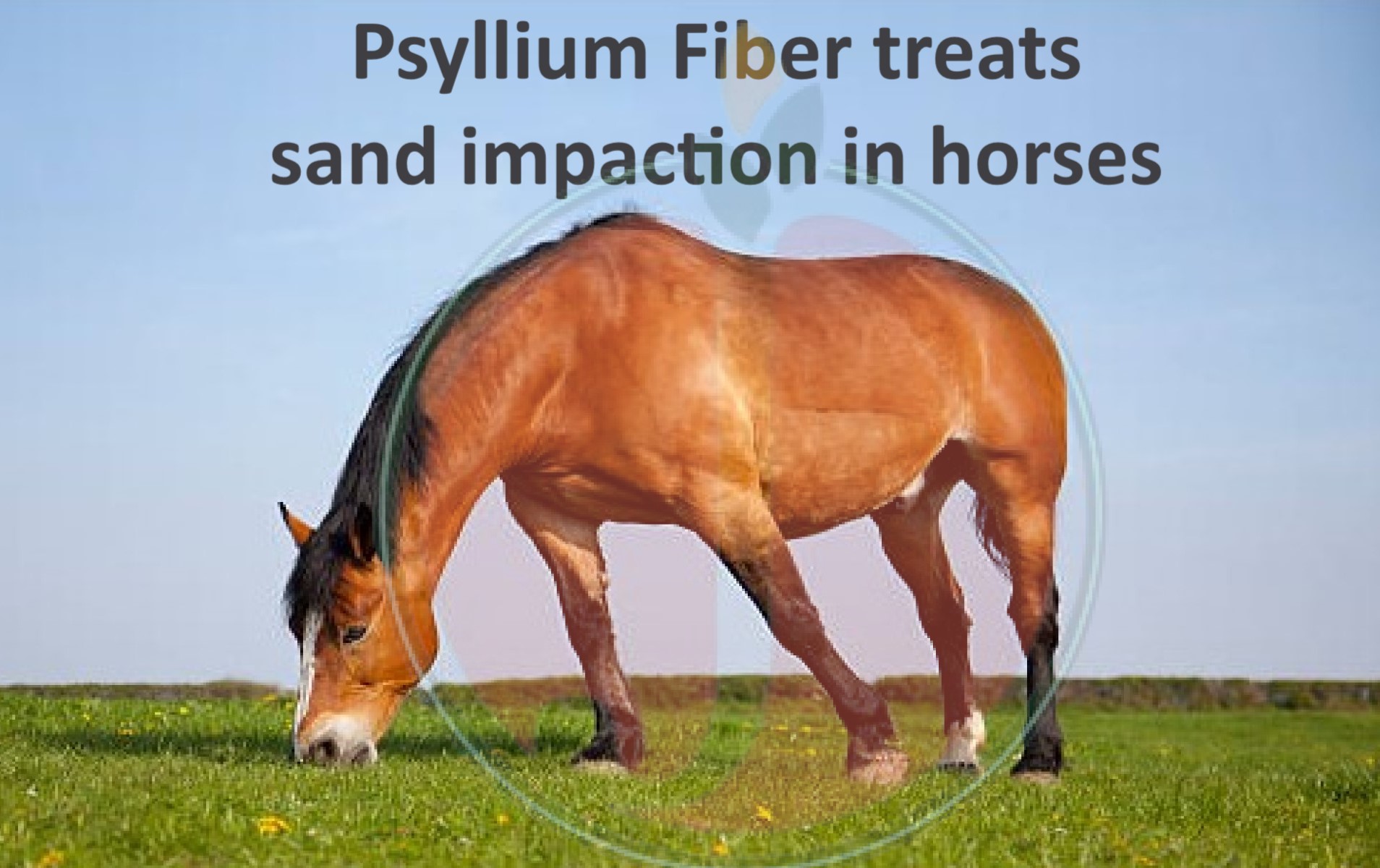Sand colic is a common and potentially life-threatening condition that affects horses that graze on sandy soils or ingest sand while eating hay or grain from the ground. Sand can accumulate in the large colon and cause irritation, obstruction, diarrhea, weight loss and even death.
Sand colic can be prevented by minimizing the exposure of horses to sand and providing adequate roughage and water intake. However, sometimes these measures are not enough and horses may still develop large sand accumulations that require medical intervention.
One of the ways to treat sand colic is to feed your horse psyllium fiber supplements. Psyllium is a natural plant-based fiber that forms a gel-like substance when mixed with water. This helps to bind the sand particles and move them out of the colon.
Psyllium has been used for decades as a laxative and a bulk-forming agent in humans and animals. It has also been shown to have beneficial effects on blood glucose and cholesterol levels, intestinal health and weight management.
But how effective is psyllium for sand clearance in horses? And what are the best ways to use it?
The Science Behind Psyllium
Psyllium is derived from the seeds of Plantago ovata, a plant native to India. The seeds have a high content of soluble fiber, mainly mucilage, which swells when exposed to water and forms a viscous gel.
This gel has several properties that make it useful for sand colic treatment:
- It increases the volume and moisture of the intestinal contents, which stimulates peristalsis and helps move the sand along the colon.
- It traps the sand particles within its matrix, preventing them from causing further damage to the intestinal mucosa.
- It protects the intestinal mucosa from bacterial toxins and inflammation by forming a barrier layer.
Some studies have found psyllium to be effective for sand clearance in horses. Below factors that shows the outcome:
- The amount and frequency of psyllium administration. Most studies have used doses ranging from 0.5 to 1 g/kg of body weight, given once or twice daily for 3 to 7 days. Higher doses may be more effective but also more expensive and potentially cause impaction or diarrhea.
- The type and quality of psyllium product. Psyllium products vary in their purity, particle size, water-binding capacity and palatability. Some products may also contain additives such as flavorings, sweeteners, minerals or probiotics. These may affect the efficacy and safety of psyllium for horses.
- The presence of other substances in the intestinal lumen. Psyllium may interact with other components of the diet or medications that are given orally to horses. For example, psyllium may reduce the absorption of some antibiotics or minerals by binding them in its gel. Conversely, some substances may enhance the effect of psyllium by increasing its water-binding capacity or stimulating its fermentation by intestinal bacteria.
- The individual variation among horses. Horses may differ in their susceptibility to sand colic, their response to psyllium treatment and their preference for psyllium products. Some horses may not tolerate or consume psyllium well, while others may benefit more from it.
The Best Practices for Using Psyllium
Based on the current evidence and recommendations from veterinarians and equine nutritionists, here are some tips for using psyllium effectively and safely for sand colic treatment:
- Consult your veterinarian before starting any treatment for sand colic. Your veterinarian can diagnose the condition by abdominal radiography or fecal sand sedimentation and recommend the best treatment option for your horse.
- Choose a high-quality psyllium product designed for horses. Look for products that have a high purity (at least 95% psyllium), a fine particle size (less than 1 mm), a high water-binding capacity (at least 40 g water/g psyllium) and a good palatability (preferably flavored). Avoid products that have additives that may interfere with psyllium’s action or cause adverse effects in horses.
- Follow the manufacturer’s instructions for dosage and administration. Generally, psyllium should be given at a dose of 0.5 to 1 g/kg of body weight, once or twice daily for 3 to 7 days. Psyllium should be mixed with water and fed separately from the regular feed, preferably before or after a meal. Psyllium should not be mixed with other supplements or medications unless advised by your veterinarian.
- Monitor your horse’s response to psyllium treatment. You should see an increase in fecal sand output within a few days of starting psyllium treatment. You can check this by collecting a fecal sample and placing it in a bucket of water. The sand will sink to the bottom while the feces will float. You can also repeat the abdominal radiography or fecal sand sedimentation test after the treatment to confirm the clearance of sand from the colon.
- Repeat psyllium treatment as needed. Depending on the severity of sand accumulation and the risk of re-exposure, you may need to repeat psyllium treatment every few weeks or months. You can also use psyllium as a preventive measure if your horse is prone to sand colic or lives in a sandy area. However, psyllium should not be used as a substitute for proper management practices that reduce sand intake and promote intestinal health.
The Bottom Line
Psyllium is a natural fiber supplement that can help your horse with sand colic by binding and removing sand from the colon. However, psyllium is not a magic bullet and its effectiveness may vary depending on several factors. Psyllium should be used under veterinary guidance and in conjunction with other measures that prevent and treat sand colic in horses.
If you have any questions or concerns about psyllium or sand colic in horses, please contact us at Exports@jyotoverseas.net and We are happy to help you and your horse live a happy and healthy life.


